Is/Was Pono Bueno?
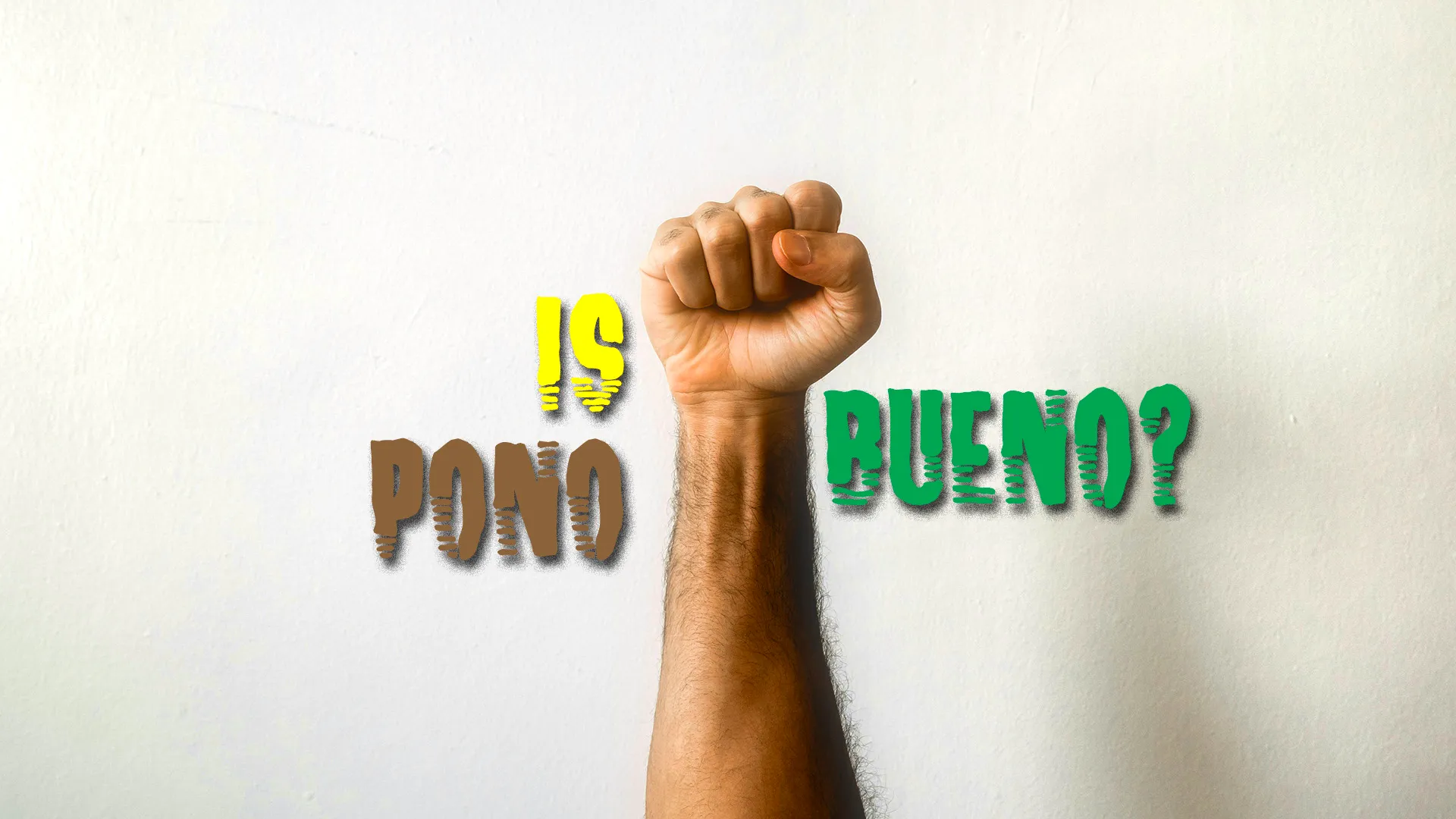
To borrow a phrase, “Inquiring Minds Want To Know.”
Prologue
This post is being written in response to some controversy on Instagram and LinkedIn over the following post and its associated Clubhouse room:
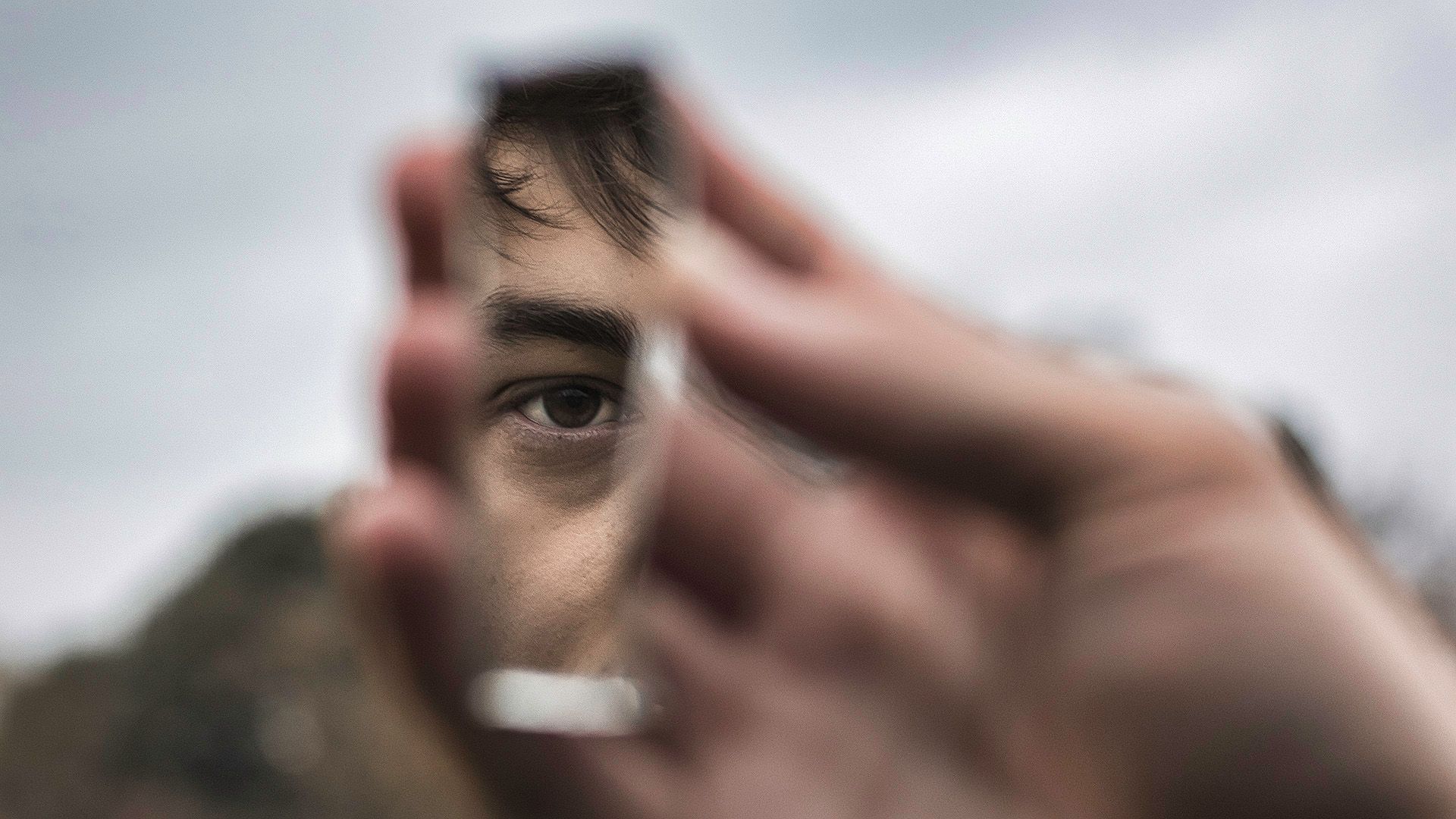
and to supplement this Clubhouse room scheduled for Wednesday, July 28th:
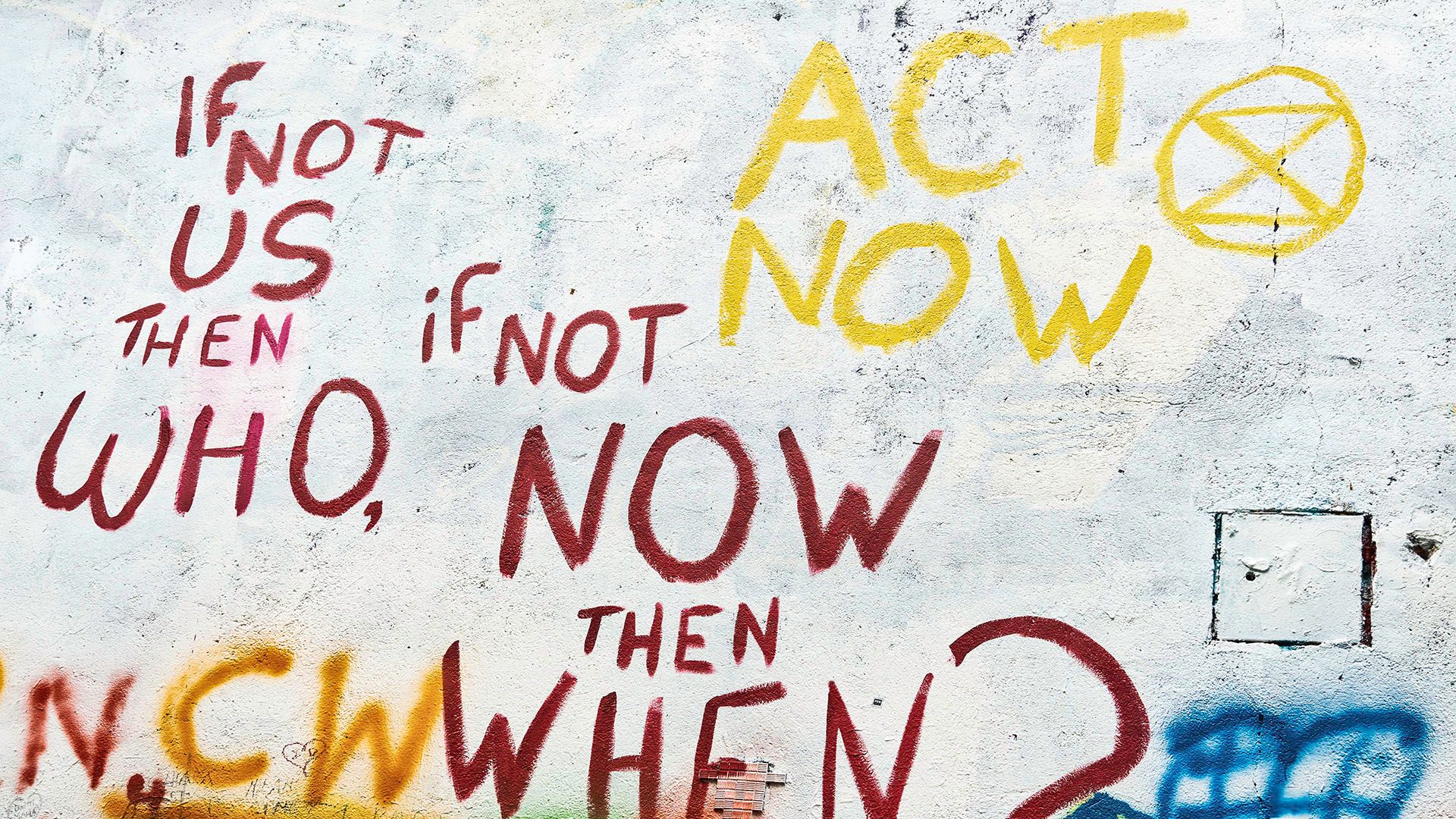
Some have asked why I am continuing to continue holding up Pono Cocoa as an example, questioning the wisdom of giving the issues I raised in the Have You Been Ponoed? post – and by extension the Pono Cocoa project itself – more visibility.
My answer is quite simple:
I think it’s important to hold organizations that make claims including “Guaranteed Child-Slave Free” accountable for the reliability of those claims.
In other words, how can we tell, from what we see on their website, Facebook pages/groups, and other social media outlets, if Pono Cocoa’s guarantee can be relied upon?
Before I continue, I want to emphasize that my basic position is in alignment with that of Pono Cocoa: slavery and illegal labor in all forms should have been ended long ago.
As my interests are in cocoa and chocolate that’s where I choose to focus my efforts. I believe that “Big Chocolate” has had more than twenty years to find and implement solutions to eradicate illegal labor in all forms in their supply chains and it’s way past time to cut them any slack.
However, while my position may be in general alignment with the goals of Pono Cocoa, my approach is not in alignment with theirs.
Furthermore, I believe Pono’s claims and representations cannot be held to be above reproach simply because they are a non-profit organization that relies on volunteer labor.
My goals, in writing this OpEd, are thus three-fold:
- Continue conversations about the importance of visibility and accountability.
- Take a look at some of the representations Pono Cocoa is making in their public outreach and what kinds of questions they raise, in pursuit of clarifying answers.
- Give readers insight into the way I evaluate claims in the hopes they will find my examples useful in evaluating these and others’ claims on their own.
I will be using and referring to content published by Pono Cocoa on their Facebook page and website. I do so relying on provisions of Fair Use in the Copyright Statutes for the purpose of analysis and critique of topics in the public interest. I believe that questions about slavery in general, and slavery in the cocoa «» chocolate supply chain specifically, are topics in the public interest and that the examination of Pono Cocoa’s claims is therefore in the public interest.
What is Pono Cocoa Claiming?
On their Facebook page, Pono Cocoa posts, among other content, images of certificates they have awarded to entities whose business operations they have determined to be, “Guaranteed 100% Child-Slave Free.” Below is a representative sample of one such certificate – the recipient company name was blurred by me; the name of the recipient was obscured by Pono Cocoa prior to posting.
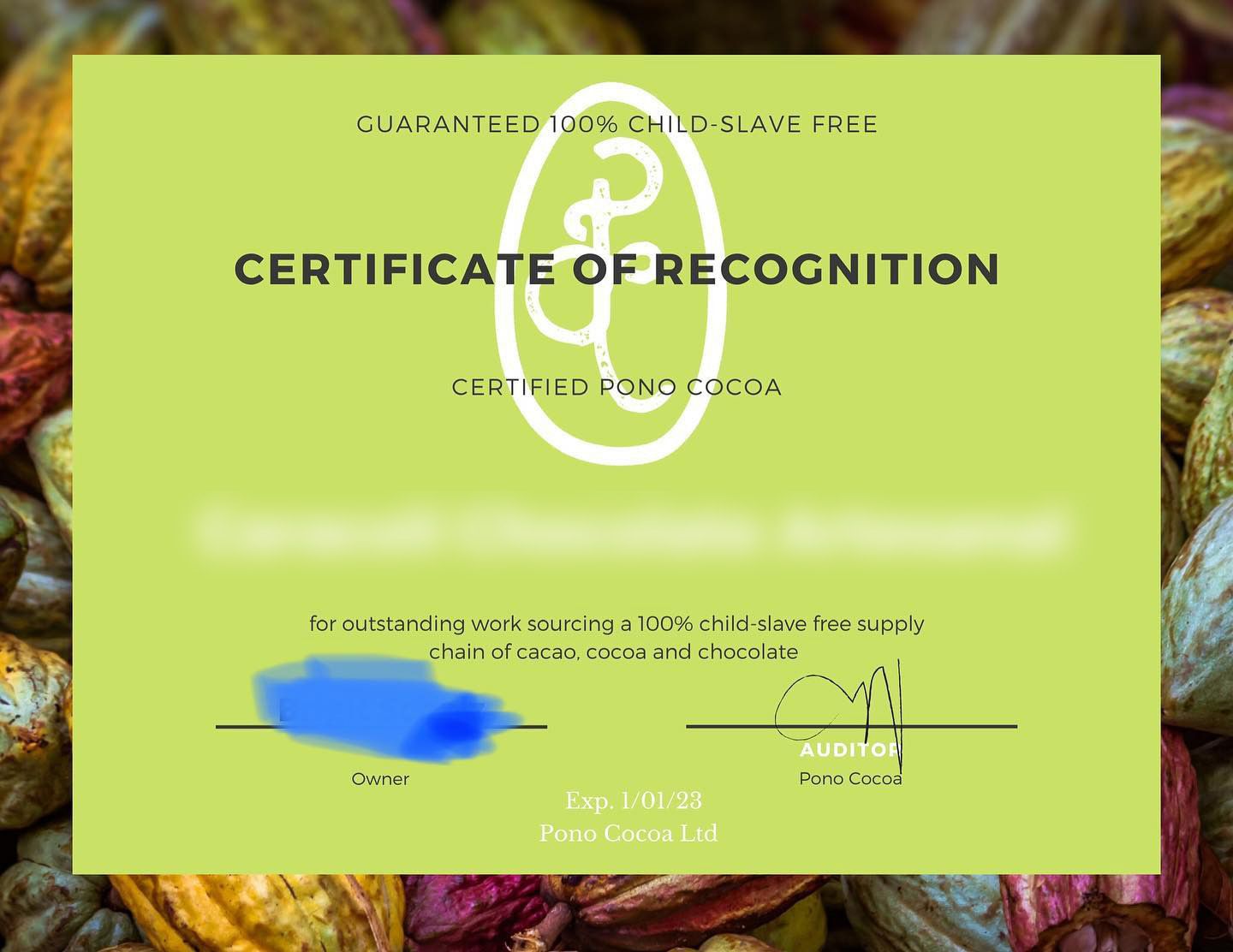
My skepticism is immediately piqued by the phrase, “Guaranteed 100% Child-Slave Free.” What I want to know – and I think anyone with an interest in this topic should also want to know – is:
- How does Pono Cocoa guarantee their guarantee?
- What are the processes and procedures they use to verify that the information that is provided to them about the companies they award certificates to are complete, accurate, and true?
- Peripherally, I am also intrigued by the distinction “child-slave free.” Aren’t slaves, irrespective of age, also slaves? Does Pono Cocoa not care about adult slaves? Are there different challenges when it comes to the requirements for that certification? Or offering a guarantee?
Note: I am asking these questions because I want to understand what Pono Cocoa is claiming to do, and how they do it, so I can talk about their project knowledgeably when people ask me about it – for example, would I recommend [a consulting client] apply for certification?
As far as I see it, recommending someone apply for certification is tacit affirmation that I find their certification processes to be sufficient.
I am also prompted to ask these questions because there are many international organizations – NGOs and private companies – with operations in multiple cocoa-producing countries that have been trying to solve the outrageous affronts to human dignity that are illegal labor and slavery in the cocoa supply chain – and have failed to do so.
Even Tony’s Chocolonely openly admits there are instances of illegal child labor – but “have never found a case of modern [emphasis added] slavery” — in their supply chain, despite years of effort and spending many Euros to eradicate it, and they have, or have access to, eyes and boots on the ground at origin as well as access to sophisticated monitoring systems, including the ICI’s CLMRS, Child Labor Monitoring and Remediation System.


In my opinion, the reference to “modern slavery” in the above post is disingenuous, a shell game with language that undermines their goals and mission. It also begs the question, “What kinds of slavery have they found?”
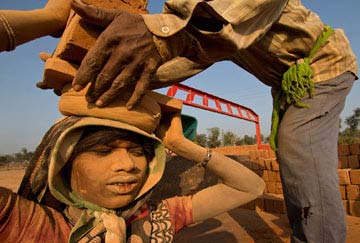
The Pono Cocoa Guarantee
I don’t think it’s unreasonable to ask, “How (that is, what policies and procedures are in place and how are they followed) can/does Pono Cocoa employ that enables them to be able to guarantee that the entities on their list are, in fact, 100% child-slave free?”
In other words, how can the chocolate-loving public put their trust in Pono Cocoa’s guarantee?
A Skeptic’s Progress
I have no special knowledge of Pono Cocoa’s processes or procedures – nothing that anyone who is also interested in this topic could learn on their own.
The opinions I have are based on looking at the Pono Cocoa website, Facebook page, corporate and related Instagram accounts, and correspondence with one of the officers of Pono Cocoa and two of the co-founders.
I do have experience in developing and maintaining websites and online communities, including authoring original content and reviewing sites for continuity and other types of errors including typos, grammatical errors, and more, and so have more than a passing familiarity with what it takes to keep a website up do date.
I am hoping that Pono Cocoa takes the following observations to heart and works diligently and punctually to address the points outlined below. Doing so could improve confidence in the rest of the information on their website.
As of July 26th, 2021 as I was writing this post:
Reviewing the Home Page
Out of my professional experience in developing, maintaining, and reviewing websites I have a number of questions about content on the Pono Cocoa home page. When I see things like the following I am alerted to look more carefully for other things might have been overlooked.
- In the footer, the copyright notice has 2018 as the year. Keeping this up-to-date is usually a basic feature of modern website builders such as Wix, which is what Pono Cocoa uses.
- In the section under “Get the Seal,” the visual treatment of ‘independent cacao farm’ suggests it is a live link; the ‘craft chocolate maker definition’ styled the same way, is a live link.
I don’t think either of the above two details taken together is sufficient to draw a conclusion one way or another. However the following makes me sit up and take notice:
- In the section under “What’s Behind the Seal” there is the phrase, “The independent cacao farmer's Pono Cocoa Seal, is a notarized [emphasis added] certification mark that identifies truly independent cacao farms and chocolatiers audited for our ethicality standards.” As there are no obvious indications on the certificate I shared above that it was notarized, and the Pono Cocoa seal is on the certificate, I wonder what is actually being notarized.
With the above in mind, it’s on to the next page listed in the top nav ...
The Pono Cocoa List
Now that I am primed to be looking for errors of omission, the list of “Righteous Chocolate” brands at the top of the page does not disappoint.
- The link to “Magie di Cioccolato” is to a non-existing (perhaps changed since the page was originally published) URL on Facebook.
- Confisirie [sic] Jonas is misspelled. It’s Confiserie.
Again, neither of the above is terribly important on its own, but given what I saw on the home page, what I am seeing suggests a less-than-diligent overall approach to maintaining the website. However:
- Two of the three officers Pono Cocoa are also officers in Island Sharks Chocolate, a fact I think should be disclosed, along with a full list of officers, co-founders, and advisory board members.
More problematically, to me, is the lack of any visual distinction in the list itself:
- There is no indication which entities were merged from the SlaveFreeChocolate list and which have been put on the list by Pono Cocoa. Of the just over 200 entities listed on the Pono Cocoa list, about 130 (or approximately 65%) are also on the SlaveFreeChocolate list. I think readers deserve to know how many of those were merged into the Pono List and if there was any additional due diligence performed on the list because SlaveFreeChocolate is not making any guarantees.
- There is no indication which entities on the list have received certificates from Pono Cocoa. All entries are visually the same so there is no way to know which companies have gone through the Pono review and which have not. This is place where displaying the seal would seem to be an ideal use.
- On the Get the Seal page there is mention of a specific requirement (also mentioned in the Definitions PDF) that a company on the list cannot have a corporate owner. From my understanding, TCHO was purchased in 2018 by Ezaki Glico, the second-largest confectionery company in Japan according to a recent Candy Industry Magazine Global Top 100 list and therefore has a parent company. Valrhona USA is a part of Valrhona (France) which is owned by Savencia Fromage & Dairy (formerly Bongrain). LA Burdick sold in 2016 to an undisclosed owner, reportedly a Korean concern.
The fact that TCHO, Valrhona, and LA Burdick are on the list causes me to question how much due diligence they have done. As all three of those companies are also on the SlaveFreeChocolate list, my hunch is they are among the merged names and no research was done on them.
I suppose a reasonable question might be, “In the absence of any visual indicators as to which companies on the Pono Cocoa list have been certified, would an average consumer with no industry knowledge just assume they all had been?”
I strongly urge Pono Cocoa to clarify this situation. If they do not, or cannot, visually indicated which companies on the list have been certified, I suggest they segment the list, clearly indicating which companies have been certified to eliminate any possibility of confusion.
The Pono Cocoa Process
As near as I can tell from what is published on the website, the Pono Cocoa certifying/auditing process consists of the following steps:
- Filling out one of four online forms: Cacao Farms/Farmers Chocolate Makers Other Businesses Individuals and Families
- Answering some additional questions based on a review of the self-reported information entered into those forms.
That appears to be all there is to it.
And this gets me to just some of the questions I would like to see Pono Cocoa’s officers answer:
- Are there more steps in this process? If so, what are they?
- How long does certification/auditing process take, on average? Minimum? Maximum?
- What research is done to verify the completeness and accuracy of the information that is self-reported? Who does this research? What resources do they have access to to perform this research? If the research is done by volunteers, who oversees the research and verifies it has been done fully and accurately? Are the people doing the research trained and qualified to perform the research?
- How many companies that apply for certification are initially rejected? Is there a formal process for appealing a rejection? What is the process?
- What is being notarized? Who gets to see and use that information?
Pono Cocoa’s Non Profit Status
Featured Image Credit:



